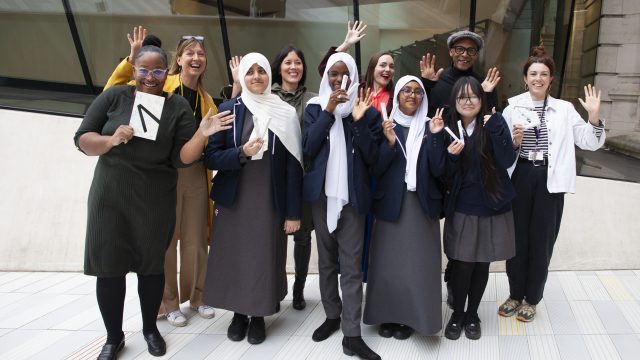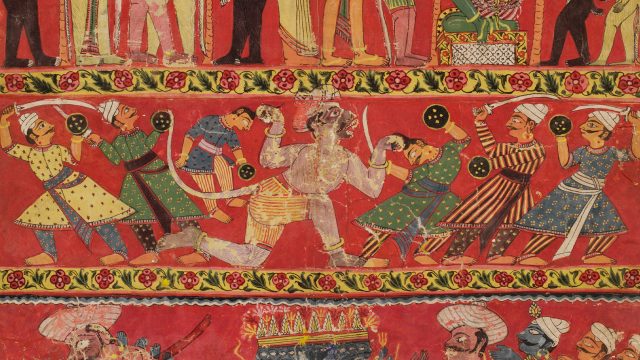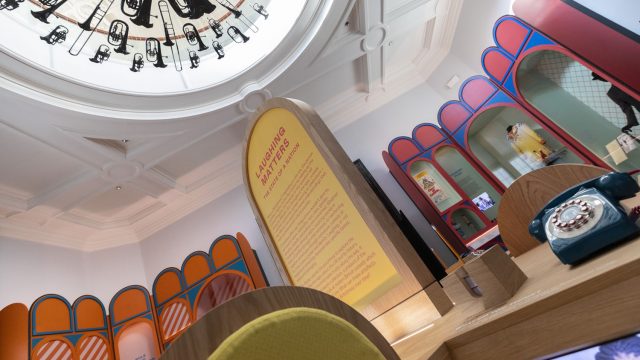When I wrote the first part of this post back in the autumn, I had every intention of getting part two out for the 2019 Rugby World Cup Final. Alas, it came around all too soon and actually ended up being a rather upsetting day for England fans. Now that I’m over the heartbreak I think it’s time to share another set of rugby-related objects from the V&A collections. With the 2020 Six Nations upon us I couldn’t think of a better occasion. Hold on to your scrumcaps…
Number 5 (Lock/Second row)
Let’s start off with an object from the Museum of Childhood collection. These 1960s cards are from a game called Old Maid, originally created in the 19th century. Although it looks innocent, like many children’s games it derives from a drinking game, in which the loser has to buy the next round. It sounds like something I should introduce to my teammates! In all seriousness, I really like these cards because they show how much of an impact sport has had on popular culture, especially for children (more on this later).
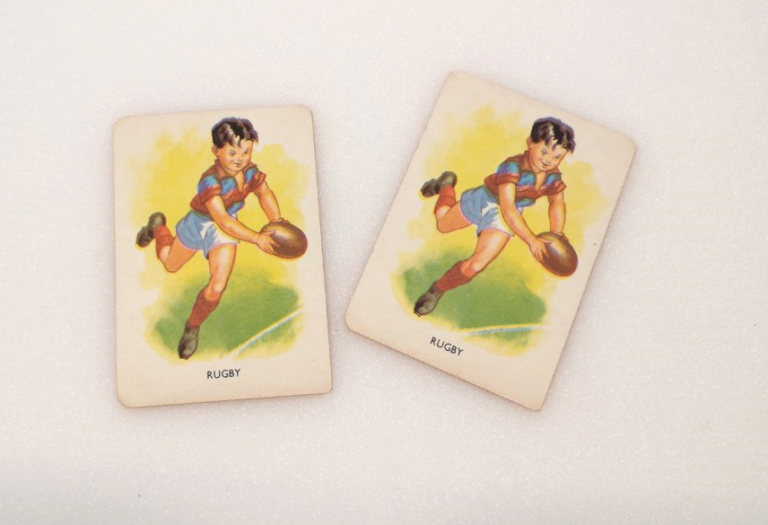
Number 4 (Lock/Second row)
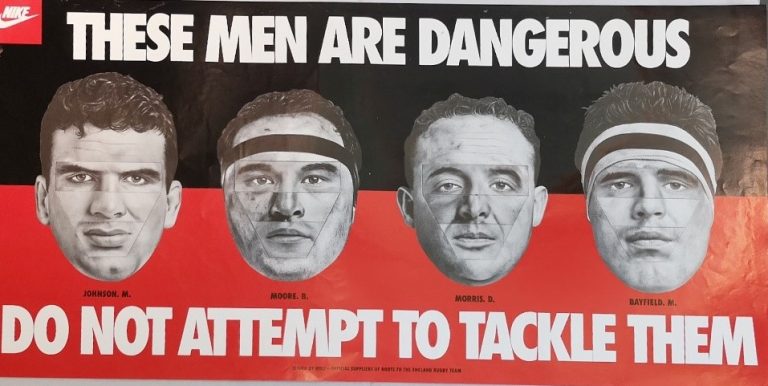
This poster was produced for a Nike advertising campaign in 1993. The faces of the players resemble photofit portraits, reminiscent of those used in police hunts for wanted criminals. It was produced by an advertising company called Simons Palmer Denton Clemmow and Johnson, who had a creative approach to many of their campaigns. I particularly like this poster because of the inclusion of Martin Johnson, whom I grew up watching and admiring. He was one of England’s greatest locks, and pulled on the white number 4 shirt on many occasions. It is no coincidence he has ended up filling this spot on my list.
While doing some research on this poster I came across another from the same Nike campaign. Unfortunately we don’t have this one in our collection, but you can find out a little more about it through the History of Advertising Trust. The poster shows England and Harlequins player, Brian Moore, a formidable part of the English front row in the 1990s. I wouldn’t want to be facing him on the pitch.
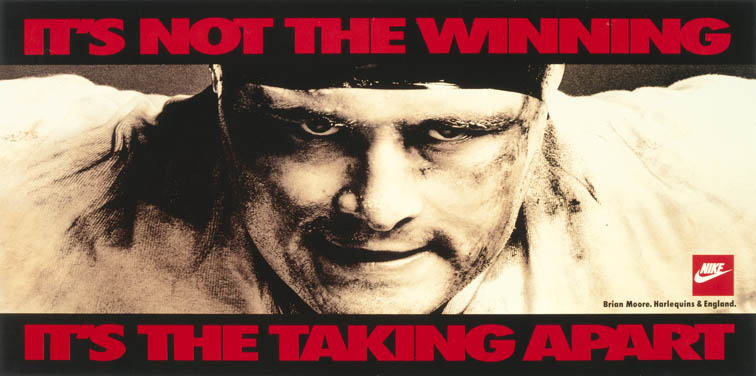
Number 3 (Tight-head prop)
This wonderful London Transport poster from 1935 advertises two rugby matches at Twickenham Stadium. The iconic New Zealand rugby team, known as the All Blacks, are due to play the London Counties and the England rugby team. It brings back joyous memories of the Rugby World Cup semi-final a few months ago when England put on a stunning performance and defeated the All Blacks 19-7 (I won’t mention what happened next).
The poster was designed by artist Hyman Segal who was born in London in 1914 and led quite an extraordinary early life. He became blind at the age of 9, but regained his sight a few years later, and was awarded a scholarship to St Martin’s School of Art aged 12. London Transport Museum now hold a number of his posters and many more rugby-themed posters by other artists.
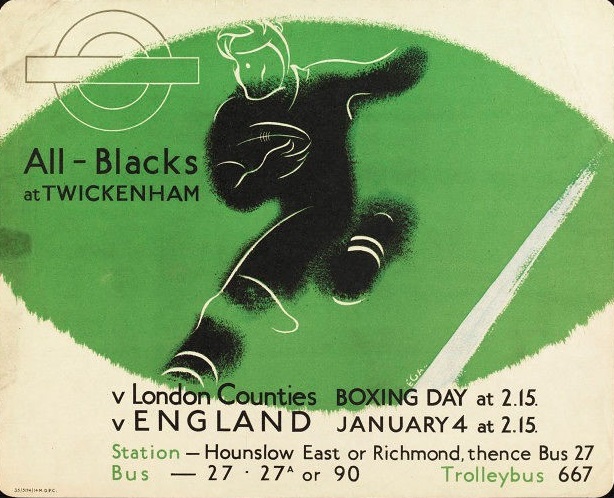
Number 2 (Hooker)
This image of a rugby match is made from woven silk, and is called a Stevengraph. These types of scenes were created in the mid-19th century by Thomas Stevens, who adapted a traditional loom in order to produce artwork. Unfortunately, during World War Two Stevens’ factory was bombed and many of the records destroyed. Luckily Stevengraphs have gone through several periods of popularity, meaning many of the images have survived. The Herbert Museum and Art Gallery in Coventry now holds one of the finest collections of Stevengraphs in the country.
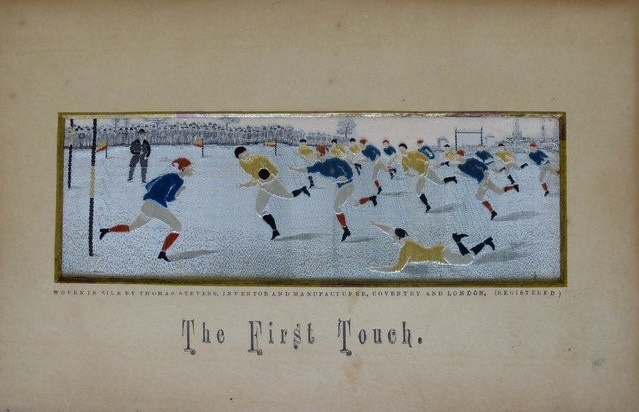
Number 1 (Loose-head prop)
My number one object on this list may not look like much at first glance, but it’s actually really special. This is a home-made board game based around a Sevens version of Rugby Union. It was created by various members of the same family in 1957. The family were prolific in designing and making these games.
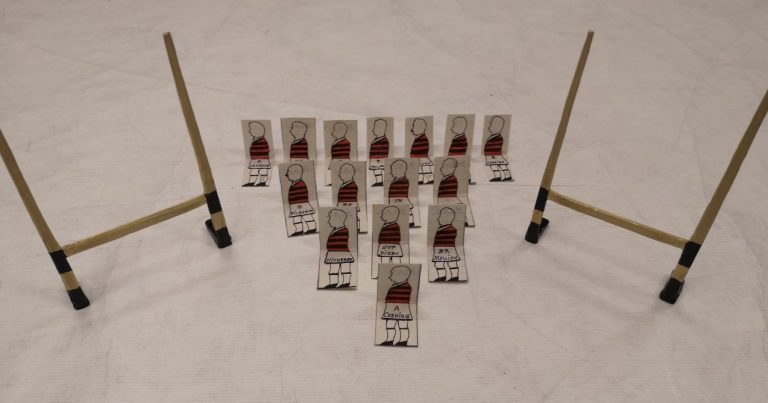
As someone who worked on the museum’s board games exhibition, I can tell you that making a successful, working (and enjoyable) game is no mean feat. We have a total of seven games made by the same family, all based around sports, including motor racing, yachting, rowing, golf, cricket, and football. As I mentioned earlier, I think its interesting to note the influence of sport within popular culture; in this case, sport has captured the imagination of children and inspired them to design and make a complex game to help them play their sports in new ways.
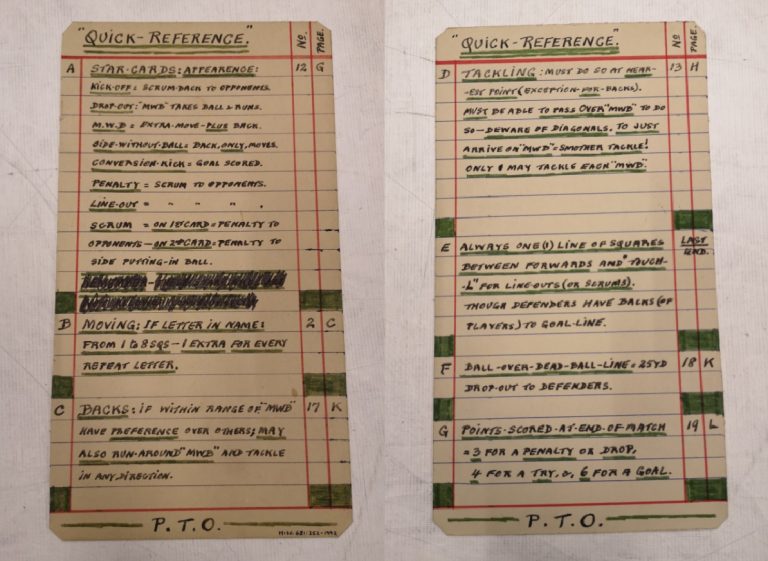
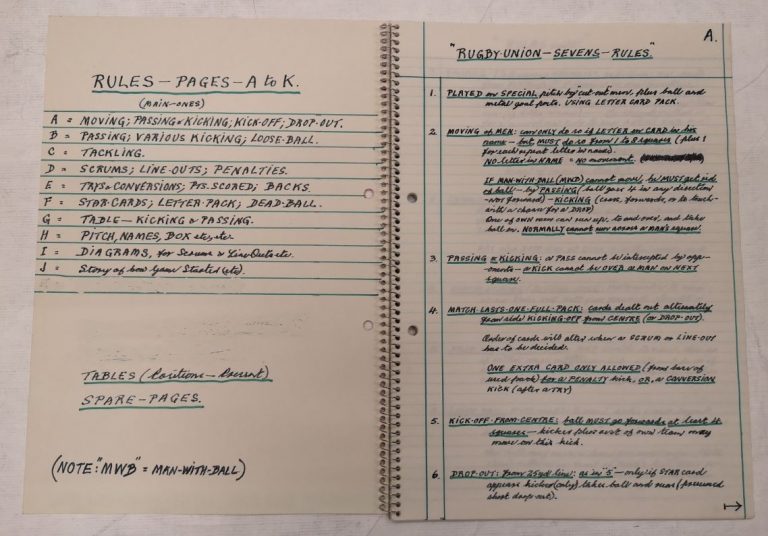
The amount of work and detail that has gone into the game is mind boggling. There are multiple books that contain rules, fixtures and tables, all immaculately labelled and organised. The first page of the rule book and the ‘quick reference cards’ shows the level of detail the family has gone to. They’ve even created individual members of various teams, a set of posts, and a tiny rugby ball. The table below shows the Blackheath Rugby Club team, the oldest open rugby club in the world. My team are playing their second team this season, and they are a force to be reckoned with! I’m have flashbacks of their kit colours zipping past me a few months ago.
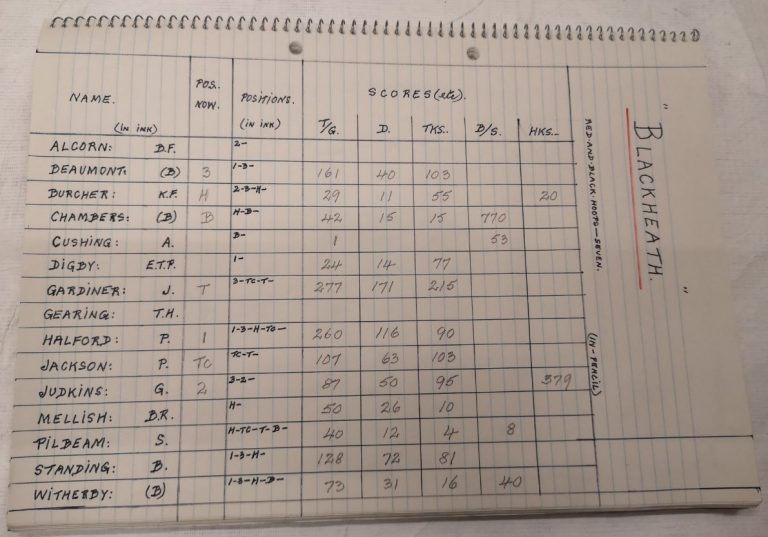
As much as I love rugby, I don’t think I’ll be playing the board game any time soon. It looks far too complicated for me, and who needs it when I’ve got the real thing! As I continue my own journey through the friendly but cut-throat world of women’s rugby I’ll keep you updated. Hopefully I’ll get an opportunity to do a third blog at some point (extra time?).
